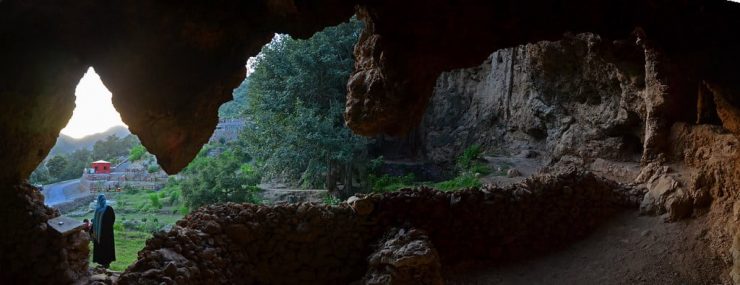The Buddha caves next to the village of “Shah Allah Ditta” are home to the oldest remains of human activity in the capital. Although Islamabad was the capital in a short period of time, the historical ruins in the region date back to ancient times. These ruins include shelters, ancient settlements and monuments. The Buddha Caves and water reservoir at the foot of the Margalla Hills at the northwest end of Islamabad have an important place among these ruins.
Located 20 kilometers from the capital, the caves are believed to have been used by Buddhist and Hindu monks for meditation. The area, called “Buda Caves” by the local people, used to be located on trade routes. It is thought that Macedonian King Alexander the Great, Sher Shah Suri, one of the rulers of the Mughal State, and different emperors used this road while passing from Afghanistan to India.
The story dating back to the Mesolithic Age
Noting that the traces of human activities in the caves date back to ancient times, Dr. Mahmud Hasan, Deputy Director of the Department of Archeology and Museums in Islamabad, said, “Considering other evidence of human existence in the region, these caves are from the Mesolithic Age (22 thousand – 10 thousand BC) to the 20th century. It can be said that people lived until their beginnings.” said.
Hasan said the caves are located on the main trade route of ancient times and are 2 kilometers from the Buddhist site Ban Fakiran. For this reason, it is not surprising that these caves were used by Buddhist monks, Hasan said, however, there are no physical remains from the Buddhist period in the caves.
Hasan stated that it is known that the caves were used by Buddhist monks and Hindu sadhus (saints), and that there is no information about whether Muslim dervishes also used the caves.



Stating that the village was named after the Muslim dervish Shah Allah Ditta, who lived in the village, Hasan said that the caves are also known as “Shah Allah Ditta Caves or Sadhu Garden” today.
The last inhabitants of the Buddha caves are the “Hindu sadhus”
Hasan said that there are some rough pictures of Vishnu, one of the gods of Hinduism, on the front of a wall in the eastern cave, but this wall was destroyed as a result of uncontrolled touristic activities.
Expressing that there are many metamorphosed stories about how the caves were used, Hasan stated that the caves were used by Hindu sadhus living in the village until 1947 and they were the last inhabitants.
Noting that Hindu families migrated to India after the independence of India and Pakistan, Hasan said that since 1947 the region has been governed by a state-affiliated board that manages the properties left behind by Hindus and Sikhs.
Hasan noted that the caves have been under protection under the Antiquities Law since 2016, but do not meet the UNESCO World Heritage criteria.
